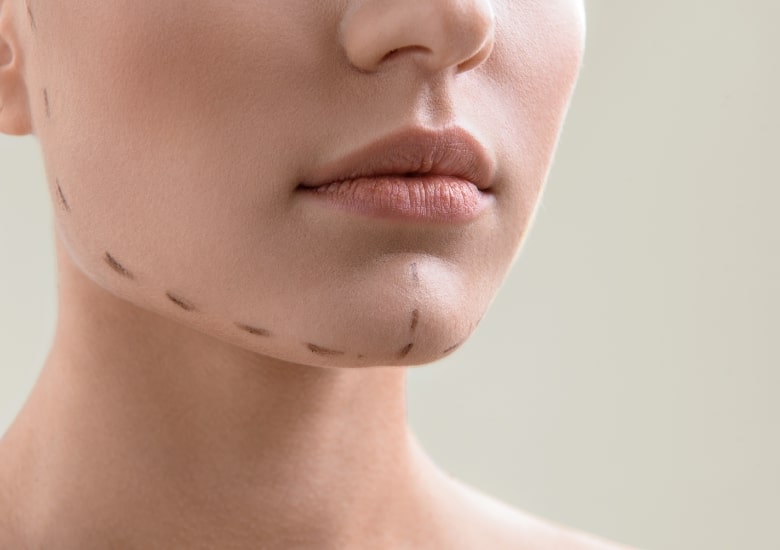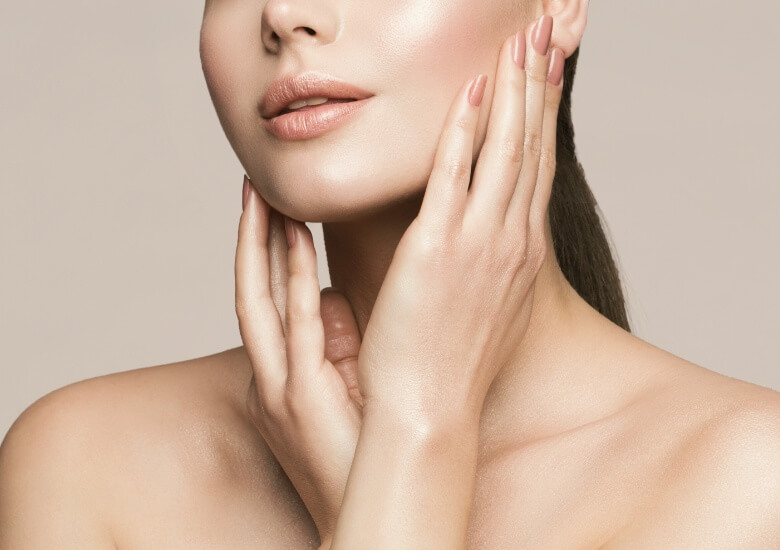Facial sculpting
INTRODUCTION TO
Facial sculpting
An alternative to a surgical facelift, facial sculpting (or contouring) is a non-invasive and non-surgical procedure, using mostly dermal fillers to reshape and enhance parts of the face, and that experiences growing popularity.
Botox, Hyaluronic acid, collagen, fat, or Platelet-Rich-Plasma (PRP), are the most common solutions injected into the chosen parts of the face, for a variety of reasons:
- smooth and soften wrinkles and lines
- Create volume
- Enhance the lips
- Reduce eye bags (crow’s feet)
- Define the jawline
- Create a fuller smile
The multifactorial process of aging affects a variety of facial structures, including bone, muscles, and fat distribution. This causes the skin to seem dryer, less elastic, lose volume, and produce less collagen, all of which contribute to the development of wrinkles, deep creases, and drooping skin.
The obvious effects of aging lead many people to develop severe self-image issues, sometimes even severe anxiety and depression. A more youthful appearance can work wonders on your self-esteem.


Consultation
The first step is to book a consultation with one of our medical professionals. There, you will discuss your cosmetic goals, but also your medical profile, a specific injectable filler will be chosen in order to treat the desired area(s).
It is of paramount importance to have realistic expectations about the results these injections can achieve. An ideal candidate for this treatment should also have healthy skin elasticity, not a lot of excess skin, and be in general overall good mental and physical health.
You will be asked to provide a full medical history, that includes previous treatments, surgeries, and conditions. You should also refrain from smoking and drinking, but also taking any type of blood-thinning medication for a few weeks before the treatment.
Patients that suffer from skin inflammation, or long-lasting skin conditions (herpes, acne, rosacea), pregnant and breast-feeding women, are encouraged to forgo any cosmetic treatment of this type.
Procedure
In most cases, the injections are performed under local anesthesia. Some solutions contain an anesthetic themselves. No matter the chosen treatment, the whole procedure lasts approximately 30 minutes and is painless for the patient. The solution will be injected into the area(s) that require treatment by needle.
Hyaluronic Acid (HA) itself is a natural substance. Dermal fillers containing it are usually sterile, clear viscoelastic gels of cross-linked hyaluronic acid of non-animal origin that are injected.
PRP nearly never poses a risk of sensitivity or allergies because it is made from your own blood. Platelet Rich Plasma is blood plasma with high platelet concentrations, which stimulate stem cells and support the body’s quick healing and regeneration.
Botox (Botulinum Toxin) injections are principally known for their ability totemporarily ease the facial muscles that contribute to wrinkles around the eyes and on the forehead and are thus used for a variety of cosmetic treatments. Acetylcholine, a chemical messenger, is released by the nerves at the point where muscle cells and nerve endings converge to cause any muscle to contract, and binds to receptors on the muscle cells,
causing them to shorten.
Injectable collagen is a naturally occurring protein that can come from cows (bovine), pigs (porcine), or human cells. Skin, bones, ligaments, and other bodily parts are supported and structurally reinforced by this protein. In order to repair wrinkles, scars, and facial lines, collagen-related fillers either taken from tissue donors or provided by the patient are typically used.
The results of most injectables will last between 6- 18 months. Then, the treatment will need to be repeated. Our medical professionals will be able to provide you with a more precise timeline.

Recovery
Recovery after facial contouring is very rapid. You will experience some bruising, swelling, and redness in the affected areas, and there will be some itching and mild pain, however, all these symptoms will subside after 24 to 48 hours.
Our physicians will provide some pain-relieving medication if needed and will suggest applying ice packs to the affected areas, or gradually and slowly massage them, in order to reduce the swelling faster.
Results will be almost immediately apparent.
Risks
Any treatment, even non-invasive, carries potential risks. These include:
- Nausea
- Infection
- Skin discoloration
- Change in skin sensation
- Scarring
- Bruising
- Swelling
- Bleeding
- Asymmetry
WE ARE HERE TO HELP YOU
Do you have any questions?
Let our medical experts answer all your inquiries and offer the solution that best fits your cosmetic needs.


